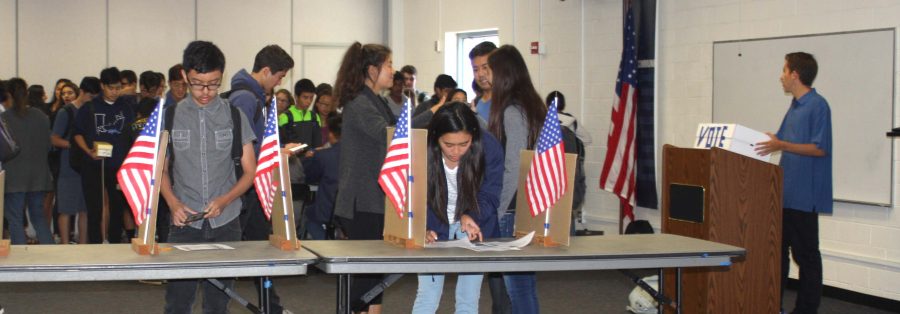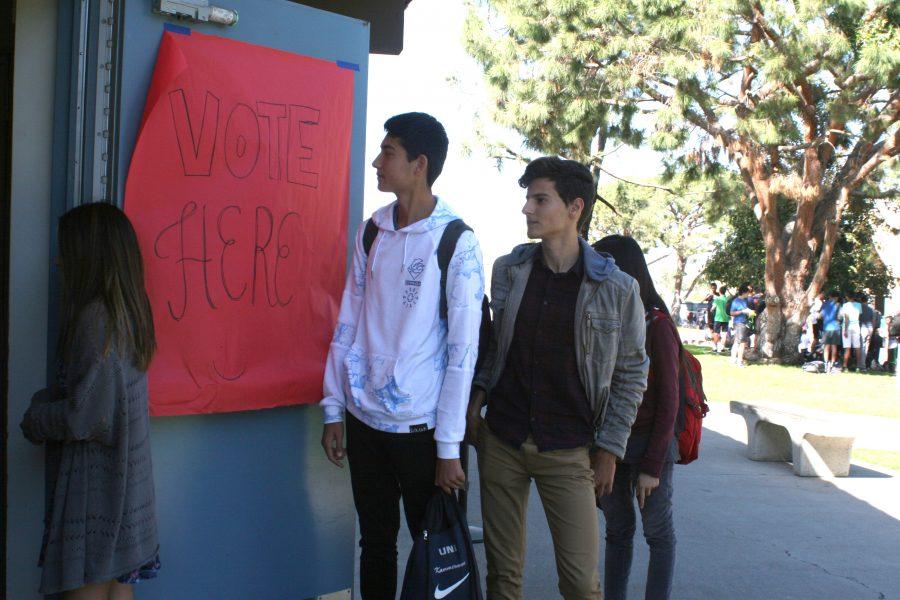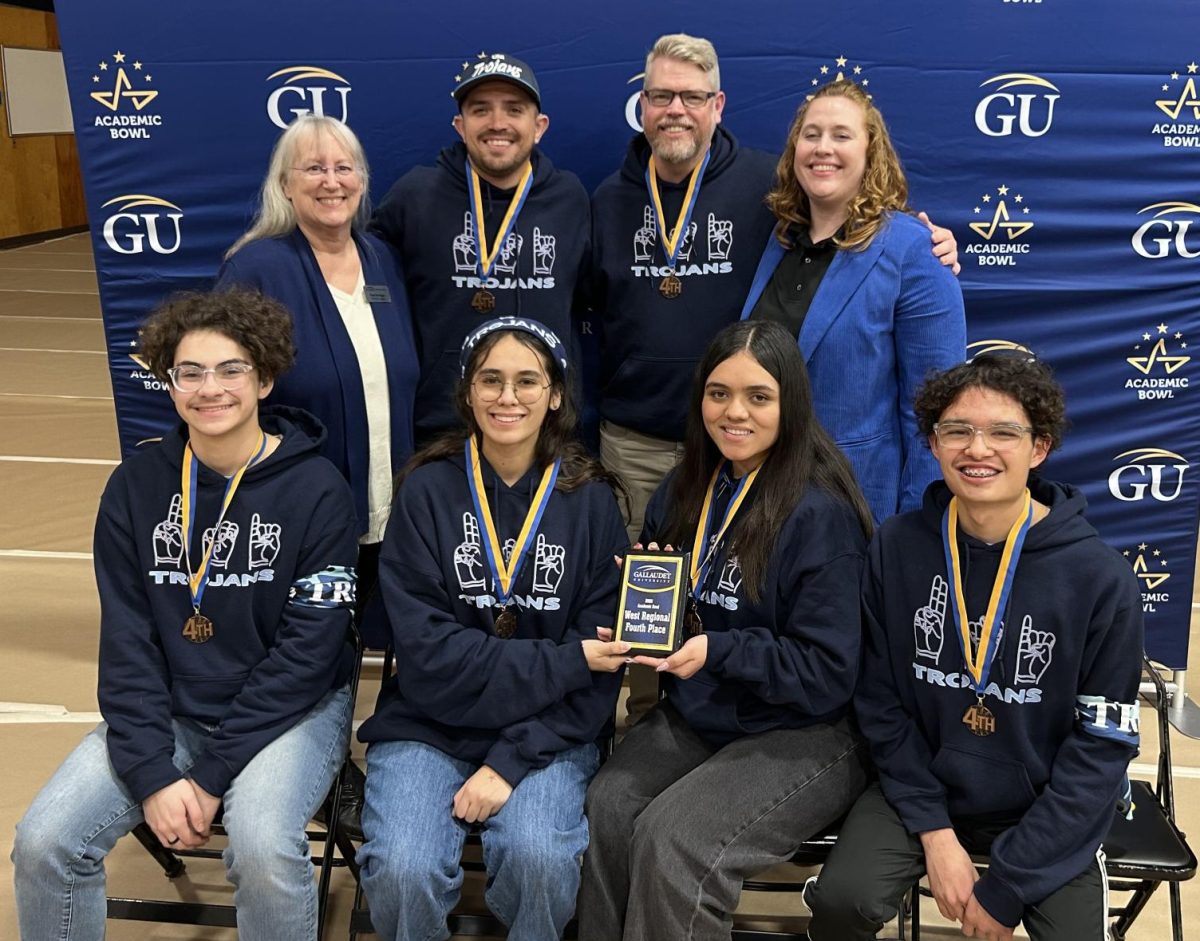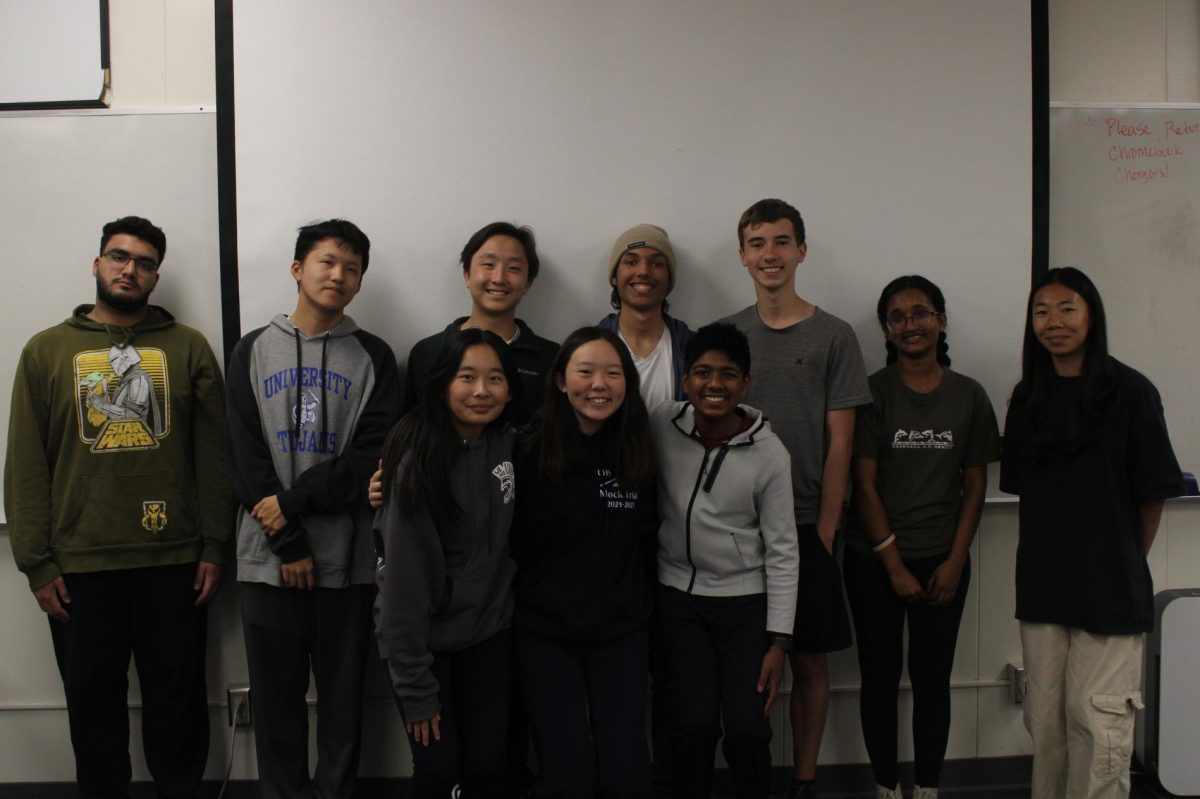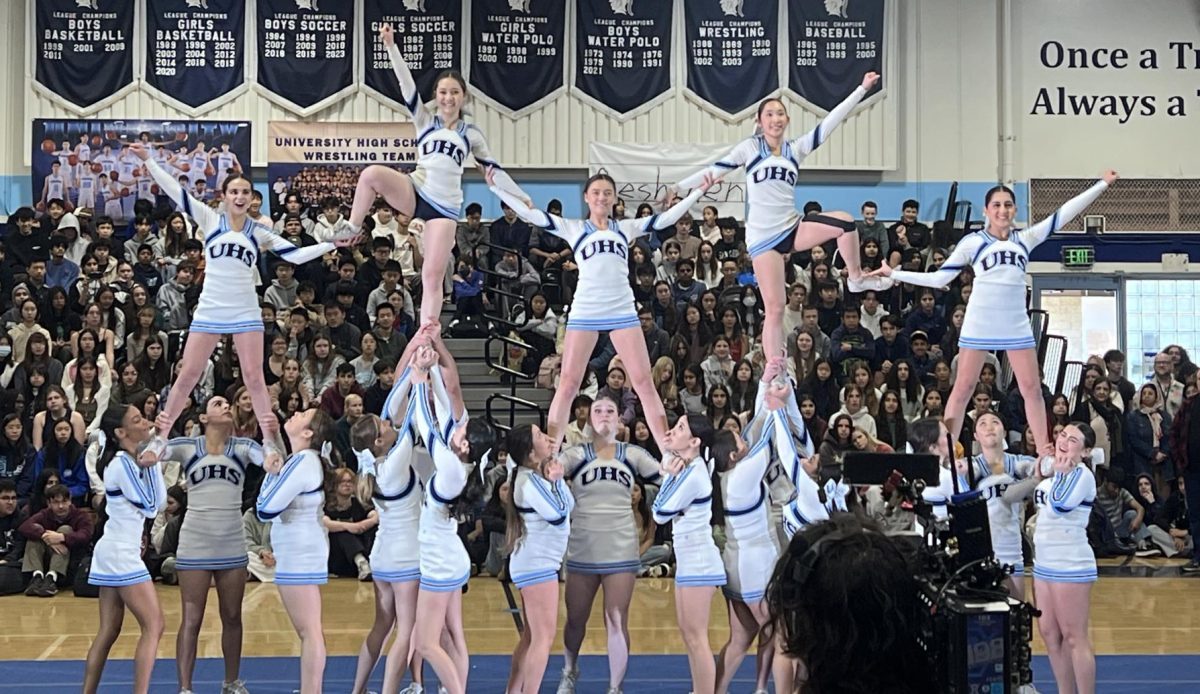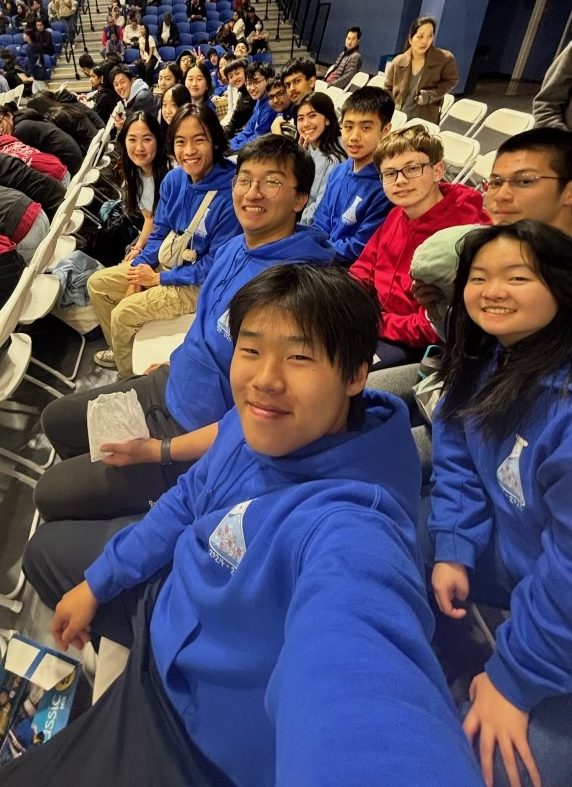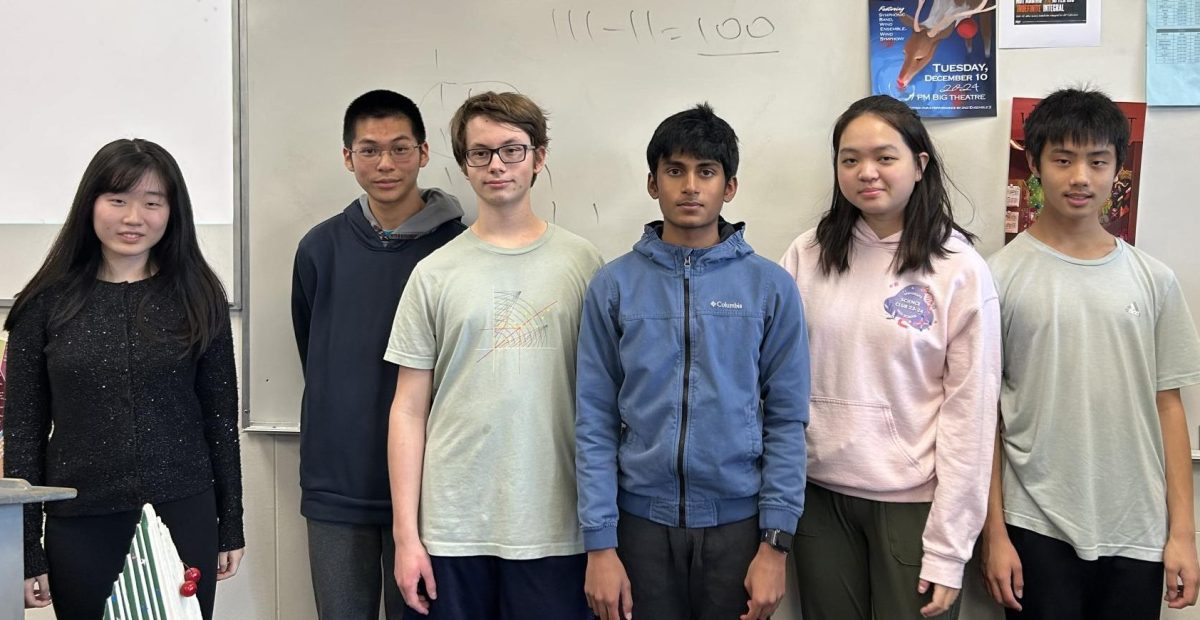Students wait in a line to enter the Model Election polling station in the MPR. (Amanda Tran)
By RACHELL CHON
Staff Writer
University High School’s (UHS) student Model Election aligned with certain state and local results while diverging from national Election Day outcomes.
At the state level, Kamala Harris won the open California seat for United States Senate vacated by Barbara Boxer with a 63% majority vote in the real election. Harris’s margin of victory at UHS was almost exactly the same, with Harris winning 61.9% of UHS student votes.
For California-specific ballot initiatives, UHS students voted to approve Proposition 55, which extended Proposition 30 taxes on income brackets above $250,000 to fund healthcare and education, and Proposition 64, to legalize the use of recreational marijuana. In the General Election, both propositions were also passed by California voters. The 55% yes to 45% no margin for Proposition 64 in the Model Election was close to the 56% yes to 44% no margin in the statewide election.
The Model Election’s most notable deviation from the real election was in the presidential race. With a 75.9% majority in the popular vote, Democratic candidate Hillary Clinton won the votes of most UHS students who participated. In the real election, however, Republican candidate Donald Trump won a 290 electoral vote plurality against Clinton’s 232 electoral votes, with 16 electoral votes unassigned at the printing of this article. However, the UHS Model Election did accurately predict that Clinton would win a majority of the popular vote.
Although candidate for Irvine Mayor Mary Ann Gaido won UHS’s Model Election with a 32.9% majority, Don Wagner won Irvine’s actual mayoral election with a 38.58% majority. Mayoral candidate Gang Chen won second place in the Model Election, while finishing third in the General Election. For the Irvine School Board, UHS students modeled the exact results of the actual election, voting to elect Lauren Brooks, Paul Bokota and Betty Carroll for the three open positions.
“I thought [the Forum] was great that we actually got real candidates to come in and talk about their issues and we had really good questions from students,” Anneke Gustafson (Sr.) said.
Some students who attended the School Board Candidates Forum found that the discussion informed their votes in the Model Election.
“I definitely saw the candidates in a new light after seeing them in person and hearing their values and how confident they were.”A total of 151 students participated in the mock election out of 352 students who pre-registered to vote, representing a 43% voter turnout. 55% of eligible voters turned out to vote in the General Election.
Voters were required to pre-register to participate in the Model Election, which was held the day before the General Election.
“I really liked [the Model Election] because I turn eighteen in January, so I wouldn’t have been able to vote,” Brandon Kaufman (Sr.), a voter, said. “Even though the votes don’t count in the real election, it’s a cool representation of what people at UHS think.”


